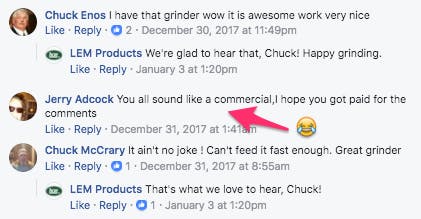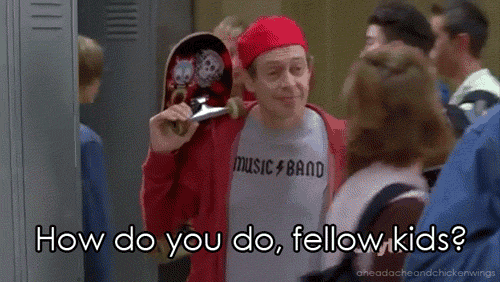If you’re reading this, chances are you have at least some knowledge of what personas and buyer journeys are. No? Here’s a quick primer:
Think of a marketing persona as a sketch or portrait of your target customers. It tells you their demographics, job responsibilities, goals, motivations, frustrations and role in the purchase decision.
And then you have the buyer’s journey. Based off the personas you’ve created, it’s an in-depth look at how your customers learn about your product or services, compare it to your competitors, and ultimately decide to purchase.
But here’s the thing…
We’re not here to give you digital strategy 101. We’re here to talk about the not-so-obvious signs your brand and marketing efforts could benefit from new or freshened up personas and buyer journeys.
We know how these things go: you have a marketing budget. With it you have the ability to make some cool things (or let’s be honest, have a really great digital agency do them for you): display ads, landing pages, six-second videos, email campaigns, VR, upgrade the coffee machine, etc.
Or, you could invest in strategy.
I know what you’re thinking…
It takes time, resources, interviews, surveys, and lots of back and forths between stakeholders, customers and your agency. And unlike a creative execution, personas and buyer journeys won’t be seen firsthand by your audience.
Often times, clients choose the former because it’s the quickest way to market. It’s a visible result of your efforts and gets your brand out there. And with easy access to Google analytics and Facebook insights, you might be thinking they’re just not worth the hassle.
There’s just one problem with that logic.
By not having a clear understanding of your audience and how they buy, it weakens all your digital marketing efforts. Here are some signs it’s time to get strategic and find out who you’re marketing to – once and for all:
SIGN #1: YOUR SOCIAL CONTENT IS WHISPERY QUIET
Personas don’t just tell you who your audience is – they tell you what they like to read, where they’re most active, and how to speak to them.
When your content delivers, they’ll shout. When it doesn’t? Well, your social and blog comments sections will be a ghost town – even when you directly ask for engagement.
Here’s an example from our client LEM, makers of meat processing equipment.

As part of a digital campaign to raise awareness for game processing and generate equipment sales, we started with digital strategy. Personas, buyer journeys and tone of voice all preceded the creative executions – a landing page, and social and display ads.
The result? LEM’s customers commented on our content to an extreme degree. So extreme, in fact, that some users questioned whether they were on LEM’s payroll.
We hit the mark because we used data and strategy to inform creative and targeting. We knew precisely how to speak to our audience, and we served them the red meat the craved. And it worked!
SIGN #2: NO ONE’S TUNING INTO YOUR VIDEOS
Could this mean the flick’s a total snoozer? Sure. But, it might be a big hint that your audience would rather read (okay, scan) a blog post instead.
A great example of this is when FoxSports ditched long-form content in favor of video.
After a few months, web traffic plummeted by 88%. If that doesn’t seem like much, consider it in this context:

Why the massive dip? FoxSports made a dramatic shift in the way it served up content, but failed to consider the audience consuming it.
Think about it.
These are 30-some males who work the 9-5 Corporate America office gig. They can’t be caught watching fantasy football videos during the workday. But they can easily sneak in a few listicles here and there without getting caught by the higher ups.
SIGN #3: MARKETING AND SALES CLASH

It’s not exactly rare for sales and marketing to engage in a lover’s quarrel.
Sales:“Marketing gives us crappy leads and they’re clueless about who our buyers are.”
Marketing:“Those guys can’t close all these amazing leads we hand them.”
Disagreements between both departments are bound to happen. (Who ate the last Boston Cream?) But there should be no arguing over who your core customers are, right?
Personas and buyer journeys ensure buy in on both sides – a unified vision for the team to rally behind.
Not just for marketers, customer personas also help sales do what they do better: sell. Is their sales spiel tailored to your customers’ challenges and pain points? What about the goals and emotional triggers?
And then, there are the demographics, which can offer the sales team handy, break-the-ice talking points. Knowing your persona is a huge NASCAR buff and bourbon connoisseur gives them an easy “in.”
SIGN #5: YOU CAN’T CONFIDENTLY SAY WHICH CHANNELS YOUR CUSTOMERS USE

“Why aren’t we marketing on [insert latest flash-in the-pan social media platform]?” Surely you’ve been asked this before. Heck, it’s probably happened recently.
Answer? Because that’s not where your customers are. And in most cases, that means it’s not the best use of your marketing dollars.
Personas will tell you exactly which channels your customers use the most, so you can hit them right in the inbox, newsfeed, or wherever they call home.
They take the guesswork out of things because you surveyed or interviewed your customers and heard it straight from the source.
We like to go a step further and do our own validation, too. That means using web analytics and social listening to make sure the data backs up what the research tells us.
SIGN #6: YOUR USERS FLAT-OUT TELL YOU

When’s the last time you checked your email unsubscribes, or surveyed your users? These can be a goldmine for figuring out whether you’re on target or way off.
With email unsubscribes, users have the option to tell you why they bolted. You’d be surprised at how many of them do so.
“I don’t have the time to read this.” “I get too many emails.” “Your content isn’t technical enough.” “I can’t open your email on my phone.” “I don’t like the color purple.” (The last one is a true story.)
On the survey side, you can find out tons of valuable information about your marketing efforts – from how well your website works, to whether your content is valuable to a user, to which channels they’d like to hear from you on.
The great thing about these consumer insights? They come straight from your users – and serve as a starting point for personas and buyer journeys.
SIGN #7: YOUR LATEST DIGITAL CAMPAIGN? ONE BIG FLOP.

It’s easy to make assumptions, but you know how the saying goes…
Instead, dig into the data and figure out how well your recent search marketing, display, social media, or other campaign performed.
If it bombed (i.e. low click-through or lack of engagement), this might be a good indication you weren’t targeting the right demo, or the messaging didn’t resonate.
A sound digital strategy – anchored by personas and buyer journeys – will help you make better, more informed marketing decisions. And, avoid any awkward conversations with your boss. Always a plus.
STILL NOT SURE?
We’re big believers in the power of personas and buyer journeys.
They help take a lot of the fluff out of marketing by arming you with real-world data, and a solid understanding of who your users are, what motivates them and how they shop.
And the best thing is, once you have them, all the other pieces – messaging, tone of voice, creative, targeting – fall into place.
So, what’s the bottom line?
Your brand could probably benefit from some upfront digital strategy – whether it’s a full persona and buyer journey buildout, or a refresh of old ones. And we’d love to help with that. Let’s chat.
